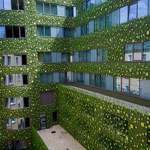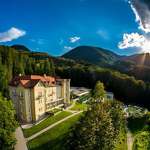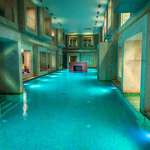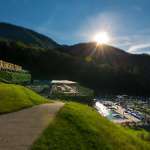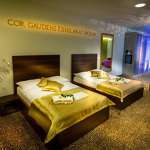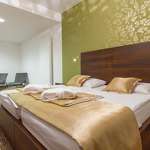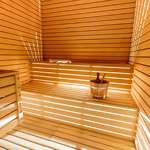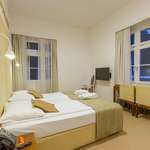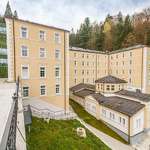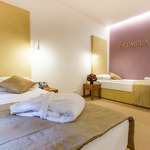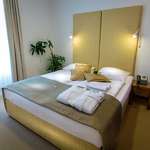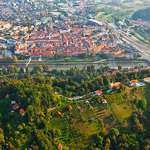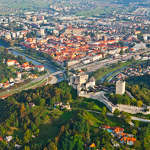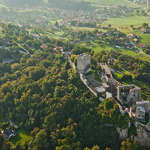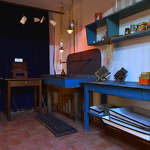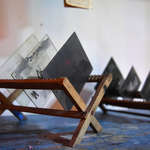
Celje – Knežje mesto
Celje je mesto, ki je zelo tesno povezano s svojo zgodovino. Že Rimljani so mu dali močno popotnico, na vrhuncu svoje slave, pa je bilo eno najpomembnejših evropskih mest. Od tu je vladala ena najmogočnejših družin, po moči in vplivu enakovredna Habsburžanom. Mesto se je pod njihovim gradom razvilo v sodobno, močno utrjeno in živahno središče. To je tudi danes, s številnimi muzeji, povezanostjo z naravo in doživetji, eno najlepših v Sloveniji.
PREDSTAVITEV
1. DAN:
Celje ima bogato zgodovino in njegova najstarejša se skriva pod zemljo. Bogati in izjemno ohranjeni arheološki ostanki iz rimskih časov nam bodo predstavili veličastnost rimskega mesta. Zagotovo bo sprehod skoraj 2.000 let nazaj, pričaral svojevrstno doživetje. Ni pa bilo mesto Celje pomembno samo v rimskem času ampak je bilo zaradi Celjskih grofov mesto, ki je v svojem času konkuriralo celo velikemu Dunaju. V Knežjem dvoru se boste lahko pobližje spoznali z zgodovino od poznega srednjega veka naprej, ko so se Celjski knezi preselili iz starega gradu v bolj udobna poslopja v centru mesta. Kosilo nas bo okrepčalo, nato pa si bomo ogledali še center mesta z živahnim mestnim utripom. Nastanitev v hotelu Rimske terme bo zagotovila sprostitev v naravi, večerja bo nasitila želodce, wellness pa sprostil napetost mišic.
2. DAN:
Ostanki nekdaj mogočnega gradu še vedno stojijo in po zajtrku bo sprehod skozi srednji vek ponudil veliko informacij o eni nekdaj najmogočnejših družin Evrope. Svojo oblast in politično moč so širili daleč po tedanji Evropi in tako krojili usodo širšega zemljepisnega območja. Prvi med Celjskimi, ki se je z ženo in štirimi otroki preselil na Stari grad Celje, je bil Friderik I. Ob vselitvi je grad temeljito spremenil in povečal v stanovanjsko rezidenco. Grad se je nato postopoma širil. Okoli leta 1400 sta bila na vzpetini zgrajena še štirinadstropni obrambni stolp, imenovan Friderikov stolp, ter obrambno obzidje, ki sta se ohranila vse do danes. V bližnji restavraciji se bo kosilo zagotovo prileglo, nato pa se bomo spustili nazaj v center in obiskali fotografski muzej Josipa Pelikana iz leta 1899, kjer imajo shranjeno bogato zbirko fotografske opreme. Za konec se boste lahko preoblekli v oblačila iz starih časov in za spomin s sabo odnesli fotografijo.
CENA PAKETA NA OSEBO
- Privatna tura z vodnikom in prevozom: od 335 €
- Skupinsko potovanje: od 255 €
PAKET VKLJUČUJE
- Ogled Celja
- Ogled Knežjega dvora in Pokrajinskega muzeja
- Ogled arheološke razstave Mesto pod mestom
- Ogled Celjskega gradu
- Ogled muzeja Josipa Pelikana
- Spominska fotografija v starih oblačilih
- 2 x kosilo v izbrani restavraciji/gostilni
- 1 x večerja
- 1 x nočitev z zajtrkom v hotelu Rimske terme****
Za več informacij o izletih in aktivnostih kliknite tukaj.
DODATNE INFORMACIJE
- program poteka od 1.5. do 31.10., prihodi so možni vsak dan v tednu
- program je namenjen skupinam 2–7 oseb in večjim skupinam, za katere lahko program prilagodimo
- možnost kombiniranja dveh ali več paketov
- turistična taksa je vključena v ceno
- zaradi Covid-19 situacije izvajanje Vip tur in skupinskih potovanj do nadaljnjega ni možno
Hotel Rimski dvor ****
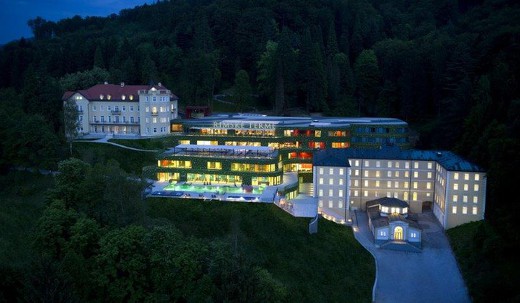
Hotelski kompleks, ki obsega hotele Rimski dvor, Sofijin dvor in Zdraviliški dvor, leži ob gozdu, v osrčju Rimskih Toplic in ima lep pogled na Savinjo.
Okolica ponuja veliko zanimivih izletov (Celje z gradom, Celjska koča, Aškerčevina, Rudarski muzej Velenje …). Tudi Rimske Toplice imajo bogato zgodovino, predvsem kot zdraviliški kraj. V preteklosti so se tukaj zdravili in počitnikovali Vuk Karadžić, cesar Ferdinand, nadvojvoda Janez, princesa Viktorija, Napoleonova sestra, princesa Murat in številni drugi.
Predajte se užitkom v zdravilni vodi iz globin Amalijinega in Rimskega vrelca – tukajšnja akrotermalna voda naj bi bila ena najbogatejših v Sloveniji. V wellness centru uživajte v slogu starih Rimljanov, saj so bazeni zasnovani po vzoru rimskih kopališč. Svoj notranji mir lahko najdete v popolnoma prenovljenem Svetu savn Varinia s še bolj bogato ponudbo, po savnanju pa se predajte še pilingu, knajpanju, starodavnim kopelim in programom za nego telesa.
V centralnem hotelu Rimski dvor je 68 sodobno opremljenih sob in suit. V skupnih prostorih in v hotelskih sobah vas bodo spremljali latinski izreki. Le kaj vam govori napis nad vašim vzglavjem? Je bil res izbran naključno? V klimatiziranih sobah je LCD TV, minibar in brezplačen WiFi. Imajo pa tudi nekaj ekskluzivnih suit, opremljenih s savnami, masažnimi kadmi in okroglimi posteljami.
V Restavraciji cesarja Ferdinanda boste deležni bogate ponudbe samopostrežnega bifeja. Če vam čez dan ponagaja lahkota, obiščite À la carte restavracijo Sofija, kjer vam bodo ponudili lokalne dobrote, za nameček pa si v Kavarni princese Viktorije privoščite odlične sladice izpod rok slaščičarskih mojstrov.
Hotel Sofijin dvor ****
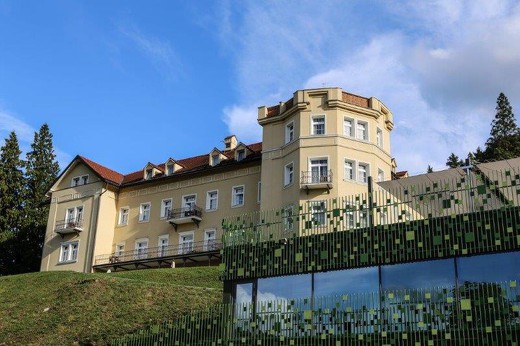
Hotelski kompleks, ki obsega hotele Rimski dvor, Sofijin dvor in Zdraviliški dvor, leži ob gozdu, v osrčju Rimskih Toplic, ki veljajo za enega lepših krajev v Sloveniji. Hotelski kompleks ima lep pogled na Savinjo.
Odlična lega v dolini Savinje, ki je objeta z neokrnjenimi gozdovi, bo blagodejno vplivala na dihala, zato čez dan pojdite na sprehod ali tek. Na terasi Sofija pa si le privoščite počitek brez slabe vesti ali se vzpnite na razgledni stolp Sofija. V čudovitem okolju z edinstveno zdravilno vodo boste stopili v preteklost, v pravi rimski raj in morda občutili mir in sprostitev kot že pred vami cesar Ferdinand, nadvodja Janez in Napoleonova sestra. Prav tako so radi sem zavili vojaški oficirji, ki so se zavedali zdravilnih učinkov termalne vode.
Danes ste takšnih in drugačnih blagodejnih učinkov lahko deležni tudi vi. Topla vrelca Rimskih term se nahajata pribl. 1000 m pod površjem. Notranji in zunanji bazeni imajo termalno vodo s prijetno temperaturo. Posebno zadovoljstvo boste čutili v masažnih bazenih, za piko na i pa obiščite Deželo savn Varinia ali se predajte pilingu, starodavnim kopelim in raznim lepotnim programom.
V hotelu Sofijin dvor je 43 sodobno opremljenih sob in suit. V skupnih prostorih in hotelskih sobah vas bodo spremljali latinski reki. Le kaj vam govori napis nad vašim vzglavjem? Je bil res izbran naključno? V klimatiziranih sobah je LCD TV, minibar in brezplačen WiFi. Imajo pa tudi nekaj ekskluzivnih suit, opremljenih s savnami.
Naužijte se lokalnih dobrot, ki vam jih pripravijo v À la carte restavraciji Sofija, ne pozabite poskusiti tudi gurmanskih burgerjev. V Restavraciji cesarja Ferdinanda vam bo na voljo bogata ponudba samopostrežne hrane, v Kavarni princese Viktorije pa si privoščite odlične sladice izpod rok slaščičarskih mojstrov.
Hotel Zdraviliški dvor ****
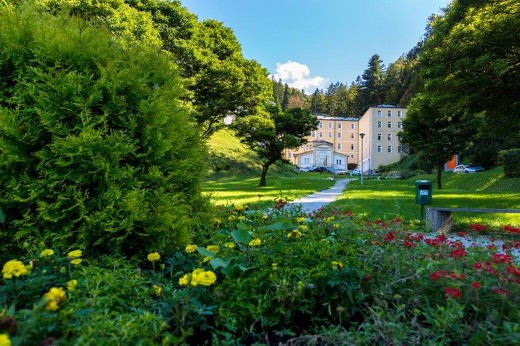
Zdraviliški dvor je del hotelskega kompleksa, ki obsega tudi hotela Rimski dvor in Sofijin dvor. V osrčju Rimskih Toplic, ob gozdu in s pogledom na Savinjo boste našli prostor zase.
Pravijo, da so zasluge vseh dosedanjih ozdravitev pripisali kar večno mladim nimfam, ki naj bi prebivale v termalni vodi. Kakšne blagodejne učinke prinašata vrelca iz globine skoraj 1000 m pod površjem, pa preizkusite sami. Prepustite se zdravilnim vrelcem in si povrnite energijo za vsakdan. Pričakujeta vas Wellness center in Dežela savn. Zaplavate lahko v notranjih ali zunanjih bazenih, na terasi pa pridobite barvo.
Napolnite svoja pljuča s svežim zrakom bližnjih gozdov, občudujte okolico skozi tek – prav presenečeni boste, ko boste ugotovili, da tukaj domujejo svetovno znane orjaške sekvoje ali mamutova drevesa, kanadska čuga, japonska hiba, cipresa, tisa, kalifornijska cedra … Če vas niso prevzeli mogočni in veličastni dvori, pa skočite do Celjskega gradu ali pokukajte kar v jedro Rimskih Term.
V hotelu Zdraviliški dvor je 76 sodobno opremljenih sob. Po skupnih prostorih in v hotelskih sobah vas bodo spremljali latinski reki. Le kaj vam govori napis nad vašim vzglavjem? Je bil res izbran naključno? V klimatiziranih sobah je LCD TV, minibar in brezplačen WiFi.
Celeia – mesto pod mestom
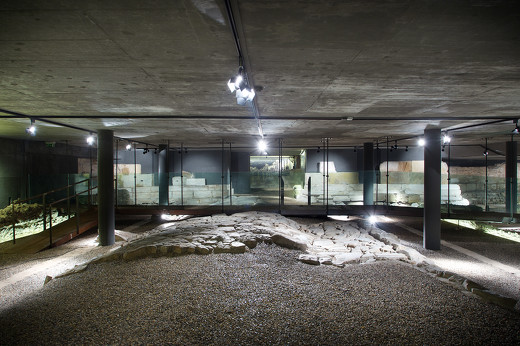
Arheološko razstavišče Celeia - mesto pod mestom v kleti Knežjega dvora je doslej največja predstavitev ostankov rimske Celeje »in situ«. Njena nema, vendar slikovita govorica Vas vabi, da se sprehodite med starodavnimi zidovi, ki pričajo o bogati zgodovini mesta.
Ugodna in zaščitena lega ob zavoju reke Savinje, bogato zaledje Savinjske doline in križišče trgovskih poti so naše prednike že v prazgodovini privabili na področje današnjega Celja. Najstarejša naselbina na Miklavškem hribu je znana že iz pozne bronaste in starejše železne dobe (9. do 6. stoletje pr. n. š.), keltski Tavriski pa so v mlajši železni dobi na terasi Miklavškega hriba nad mestnim parkom postavili eno od svojih pomembnejših središč. O pomenu tedanje keltske naselbine pričajo med drugim tudi ostanki kovnice srebrnega denarja.
Leta 15 pr. n. š. je bilo Noriško kraljestvo, v njegovem sklopu pa tudi oppidum Kéleia, priključeno rimski državi. V letih vladavine cesarja Klavdija (41-54 n. š.), v obdobju, ko je Norik postal rimska prokuratorska provinca, je Celeja med prvimi v provinci dobila status municipija (samostojnega mesta) s polnim imenom Municipium Claudium Celeia. Naslednji dve stoletji sta predstavljali za mesto obdobje največjega razcveta in tudi fizične rasti.. V obdobju pozne antike se je Celeia močno zmanjšala, po izteku 5. in v 6. stoletju pa se nekoč cvetoče mesto skoraj ni več omenjalo.
Celjski grad

Romantičen, zapeljiv, mogočen, temačen, strašljiv, celjski ... Vse to je Stari grad Celje. Predstavlja obvezno destinacijo za vse obiskovalce Celja ne glede na to, od kod prihajajo. Mogočni grad z obzidjem, ki že stoletja vlada na griču nad mestom, vas bo že od daleč pustil brez besed. Ko ga boste obiskali, vam bo v spominu ostal za vedno.
Stari grad Celje je v pisnih virih prvič omenjen leta 1323. Njegova podoba je bila sprva mnogo skromnejša, saj je obsegal le romanski palacij z obzidjem. Današnjo podobo je grad dobil kasneje, ko so ga prevzeli grofje Celjski, najbolj znana in najpomembnejša vladarska rodbina na območju današnje Slovenije. Svojo oblast in politično moč so širili daleč po tedanji Evropi in tako krojili usodo širšega zemljepisnega območja. Prvi med Celjskimi, ki se je z ženo in štirimi otroki preselil na Stari grad Celje, je bil Friderik I. Ob vselitvi je grad temeljito spremenil in povečal v stanovanjsko rezidenco. Grad se je nato postopoma širil. Okoli leta 1400 sta bila na vzpetini zgrajena še štirinadstropni obrambni stolp, imenovan Friderikov stolp, ter obrambno obzidje, ki sta se ohranila vse do danes. Friderikov stolp je dobil ime po Frideriku II. Celjskem, ki je bil v stolpu zaprt. Dinastija Celjskih se je končala s smrtjo zadnjega moškega potomca, Ulrika II.
Grad je s prenovo dobil tudi sodoben Turistično informacijski center in Kavarno Veronika ter tako postal atraktivna turistična točka, ki ponuja prelep razgled na mesto in okolico. V Turistično informacijskem centru lahko obiskovalci izberejo promocijske zloženke, informativno gradivo o gradu, Celju in okolici ter informacije o znamenitostih in prireditvah v Celju. Na voljo je pestra izbira spominkov ter izdelkov domače in umetnostne obrti.
Stari grad Celje je vsako zadnjo soboto v avgustu prizorišče tradicionalne srednjeveške prireditve »Dežela Celjska vabi«, v poletnih mesecih pa se na njem odvija program Živa zgodovina, ki obiskovalcem ponuja možnost, da z obiskom postanejo del »žive« zgodovine in v avtentičnem okolju mečujejo z vitezi, streljajo z lokom, se spogledujejo z grajskimi princesami, ustvarjajo v srednjeveških delavnicah …
Josip Pelikan
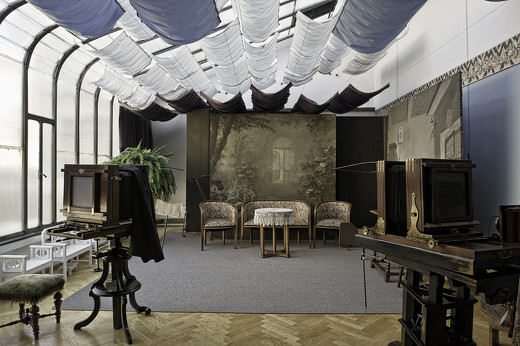
Njegovi starši so imeli v Pragi fotografski atelje in se preselili v Trbiž, kjer je bilo takrat prosto mesto za fotografsko obrt. Tam se je mladi Pelikan prvič srečal s fotografijo, ki ga je poklicno zaznamovala za vse življenje. Po materini smrti in očetovi ponovni poroki se je družina 1894 preselila v Idrijo, sin pa se je začel podrobneje seznanjati z očetovo umetnostjo fotografije, ki ni zajemala le tehnike s suhimi, tovarniško narejenimi, ampak tudi z doma izdelanimi, mokrimi fotografskimi ploščami, ki so dajale fotografiji lepše tone. Na sokolskem nastopu v Brežicah je Josip spoznal dekle, s katerim se je leta 1910 poročil in v kraju osnoval sprva skromen fotografski atelje. Že dve leti kasneje si je Pelikan v Idriji postavil novo hišo z ateljejem in se osamosvojil. Leta 1920 pa se je preselil v Celje, v hišo prof. Jarca, ki se je je z dvoriščne strani držal atelje bivšega celjskega fotografa Lenza. Hišo z ateljejem je odkupil in tako je Celje postalo središče njegove fotografske ustvarjalnosti vse do smrti.
Že 4. maja 1910 so mu izstavili fotografsko obrtno dovoljenje in tako je 67 let opravljal vlogo vizualnega spomina svojega okolja, večino tega časa v Celju in okolici. Izobrazil je številne odlične fotografe, njegov obsežen fotografski opus pa zajema vse pomembnejše dogodke njegovega časa; obe svetovni vojni, rojstvo in propad držav, dogodke in osebnosti, v mirnejših časih pa se je velikokrat posvetil lepotam narave – zlasti planinskega sveta. Njegova obsežna fotografska zapuščina, ki jo po delih hranijo številne celjske ustanove, predvsem pa Muzej novejše zgodovine Celje, predstavlja pravo legendo celjske fotografije in slovi po izredni kvaliteti.
- H1 Hotel Rimski dvor ****
- H2 Hotel Sofijin dvor ****
- H3 Hotel Zdraviliški dvor ****
- 4 Celeia – mesto pod mestom
- 5 Celjski grad
- 6 Josip Pelikan
-
- VIP tura z vodnikom in prevozom
- Skupinsko potovanje
-
Št. osebPotrdi
Transfer z letališča
Gostom, ki k nam prihajate z letalskim prevozom, nudimo ugodne in udobne transferje z več okoliških
letališč. Naš šofer vas bo pričakal ob prihodu ter vas na povratku varno in pravočasno pripeljal do vhoda
v letališko zgradbo. Transfer lahko brez stroškov odpoveste do 72 ur pred pričetkom prevoza. Obvestilo o
točni uri in lokaciji odhoda prejmete en dan pred prevozom.
-
Relacija transferja:
-
Razdalja:km
-
Čas vožnje:h
-
Vrsta transferja:enosmerni prevoz
-
Cena:€ na osebo
-
Število oseb:
-
Relacija transferja:
-
Razdalja:km
-
Čas vožnje:h
-
Vrsta transferja:povratni prevoz
-
Cena:€ na osebo
-
Število oseb:
Prevoz od doma do hotela
Gostom iz severne Italije ponujamo možnost prevoza od doma do hotela. Izbirate lahko med
dopoldanskim ali popoldanskim terminom, prevoz je namenjen za rezervacije 2–7 oseb do 5 dni pred
pričetkom prevoza. Obvestilo o točni uri in lokaciji odhoda prejmete en dan pred prevozom.
-
Relacija transferja:BENETKE - MORAVSKE TOPLICE
-
Razdalja:km
-
Čas vožnje:h
-
Vrsta transferja:enosmerni prevoz
-
Cena:€ na osebo
-
Število oseb:
-
Relacija transferja:BENETKE - MORAVSKE TOPLICE
-
Razdalja:550 km
-
Čas vožnje:5,5h
-
Vrsta transferja:povratni prevoz
-
Cena:€ na osebo
-
Število oseb:
Holidays in Slovenia.
Na vaš elektronski naslov boste prejeli samodejni povzetek rezervacije, končno
potrditev vam pošljemo po prejemu plačila.
Povzetek rezervacije boste prejeli najkasneje v dveh urah; v kolikor ga ne bi
prejeli, nas, prosimo, čimprej pokličite oz. pošljite e-sporočilo. Še prej preverite
"nezaželeno pošto".
Hvala za zaupanje in lep pozdrav!
HolidaysinSlovenia.eu

